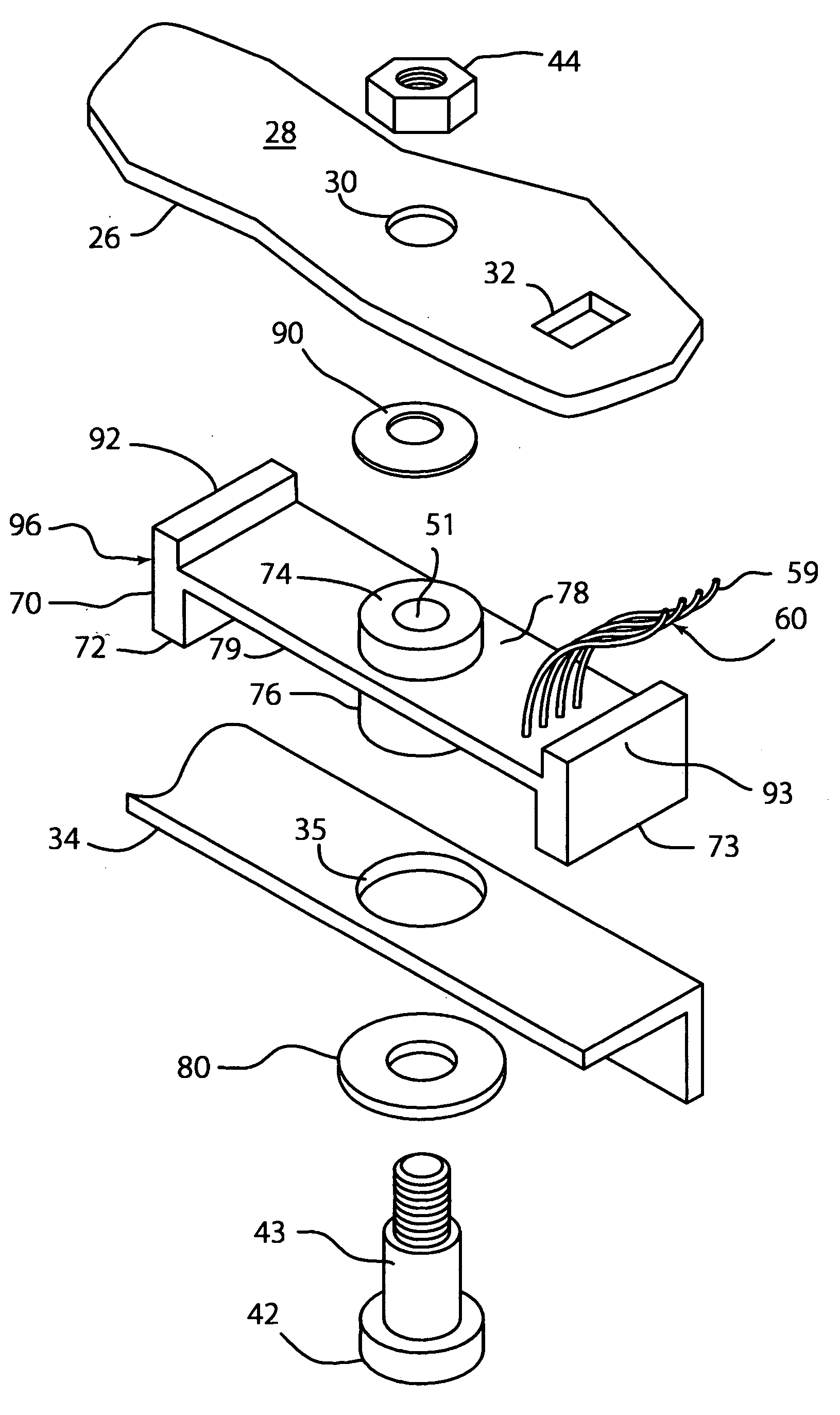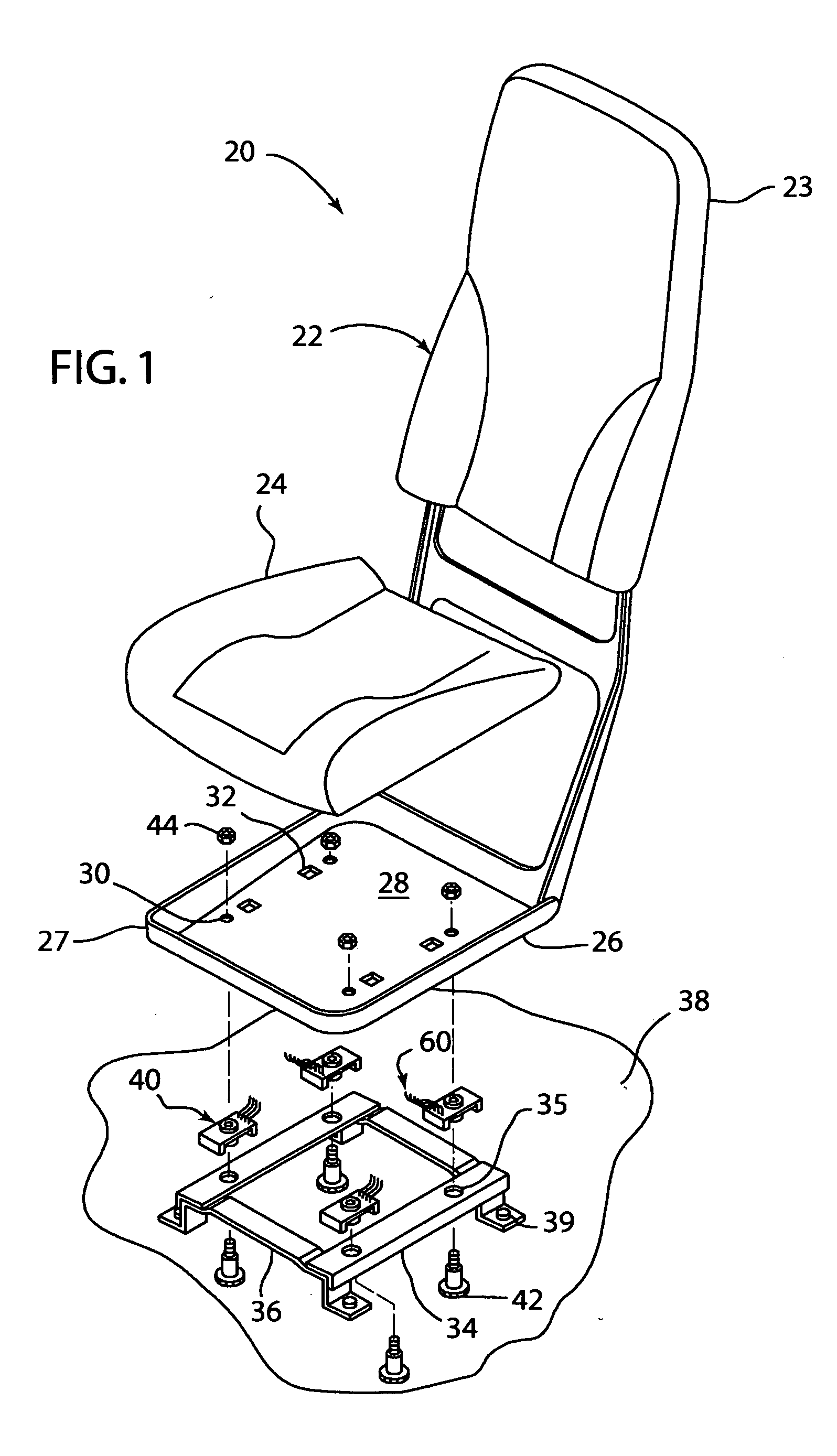Vehicle seat weight sensor
a weight sensor and vehicle seat technology, applied in the direction of instruments, pedestrian/occupant safety arrangements, force/torque/work measurement apparatus, etc., can solve the problems of uniform weight reading, injuring the occupants, and inability to detect the weight of the front passenger seat, so as to achieve reliable and cost-effective effects
- Summary
- Abstract
- Description
- Claims
- Application Information
AI Technical Summary
Benefits of technology
Problems solved by technology
Method used
Image
Examples
case 70
[0025] Case 70 is able to move slightly from side to side in hole 35, this allows side loads on assembly 20 that are not in the vertical axis to be absorbed by case 70 but not measured. In other words, case 70 decouples the strain gage resistors from side or off vertical axis loads. Sensor 40 therefore is somewhat insensitive to side loads which are undesirable to be measured. Loads in the vertical direction are representative of seat occupant weight and are measured by sensor 40.
[0026] Referring to FIG. 3, lower boss 76 fits into hole 35. Upper boss 74 and lower boss 76 both surround shoulder 43. A gap 82 is formed between seat pan bottom 28 and top center portion 78. Similarly, another gap 84 is formed between rail 34 and bottom center portion 79. When an occupant sits on seat bottom 24, the seat occupants weight is transferred from seat bottom 24 to seat pan 26, through sensor 40, to seat member 34, then to carriage 36 and floor 38. The entire weight of the seat occupant is suppo...
PUM
 Login to View More
Login to View More Abstract
Description
Claims
Application Information
 Login to View More
Login to View More - R&D
- Intellectual Property
- Life Sciences
- Materials
- Tech Scout
- Unparalleled Data Quality
- Higher Quality Content
- 60% Fewer Hallucinations
Browse by: Latest US Patents, China's latest patents, Technical Efficacy Thesaurus, Application Domain, Technology Topic, Popular Technical Reports.
© 2025 PatSnap. All rights reserved.Legal|Privacy policy|Modern Slavery Act Transparency Statement|Sitemap|About US| Contact US: help@patsnap.com



